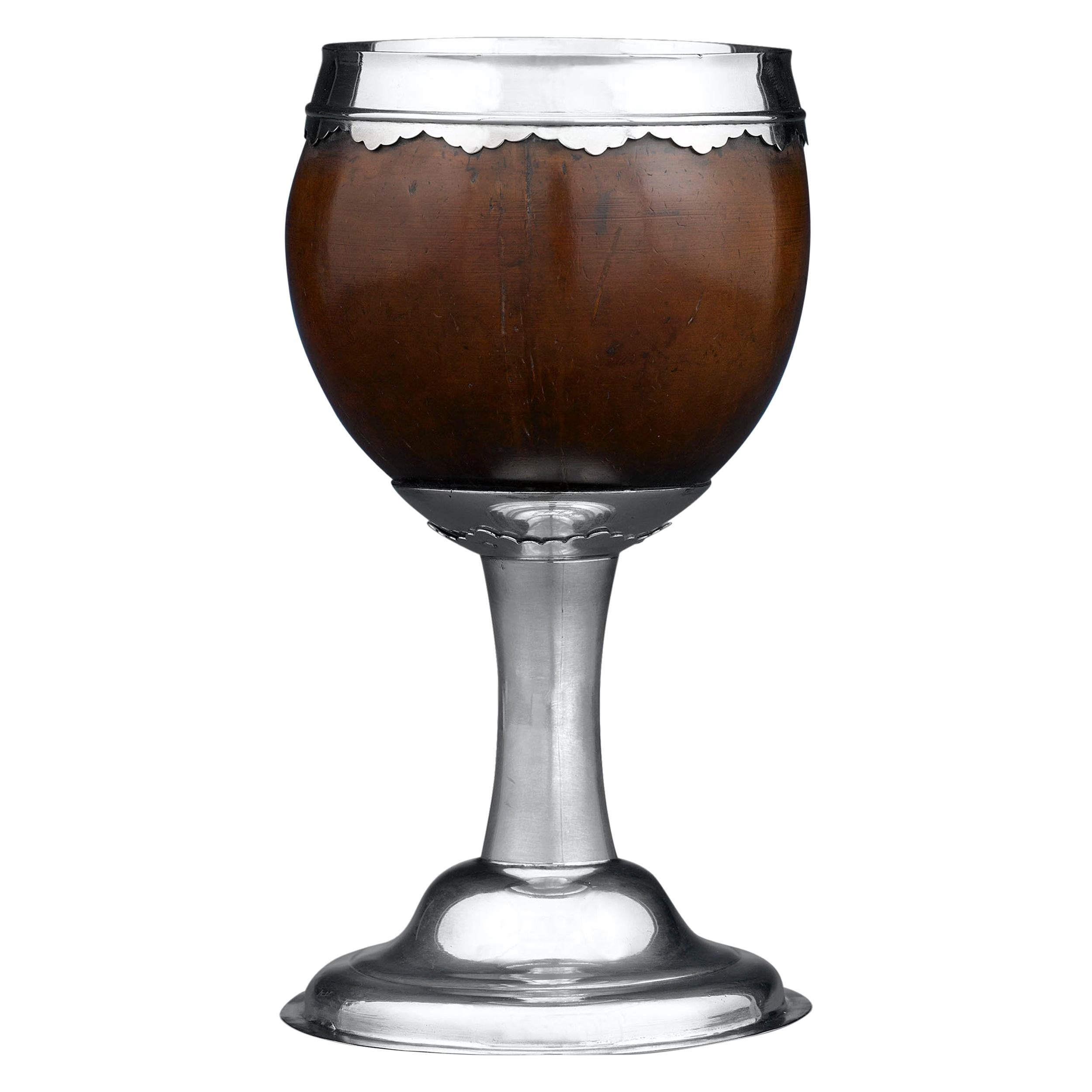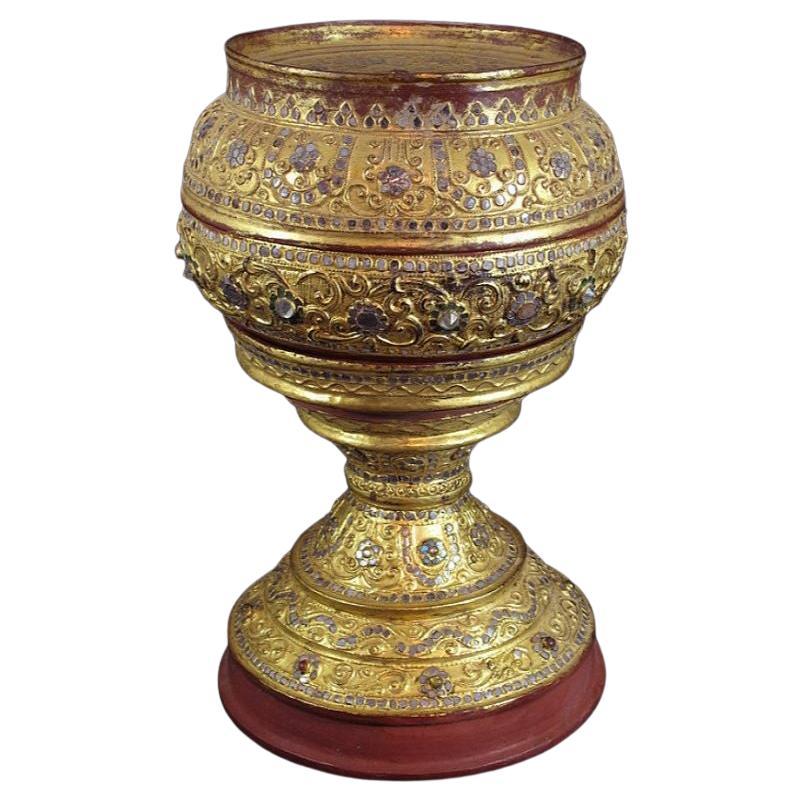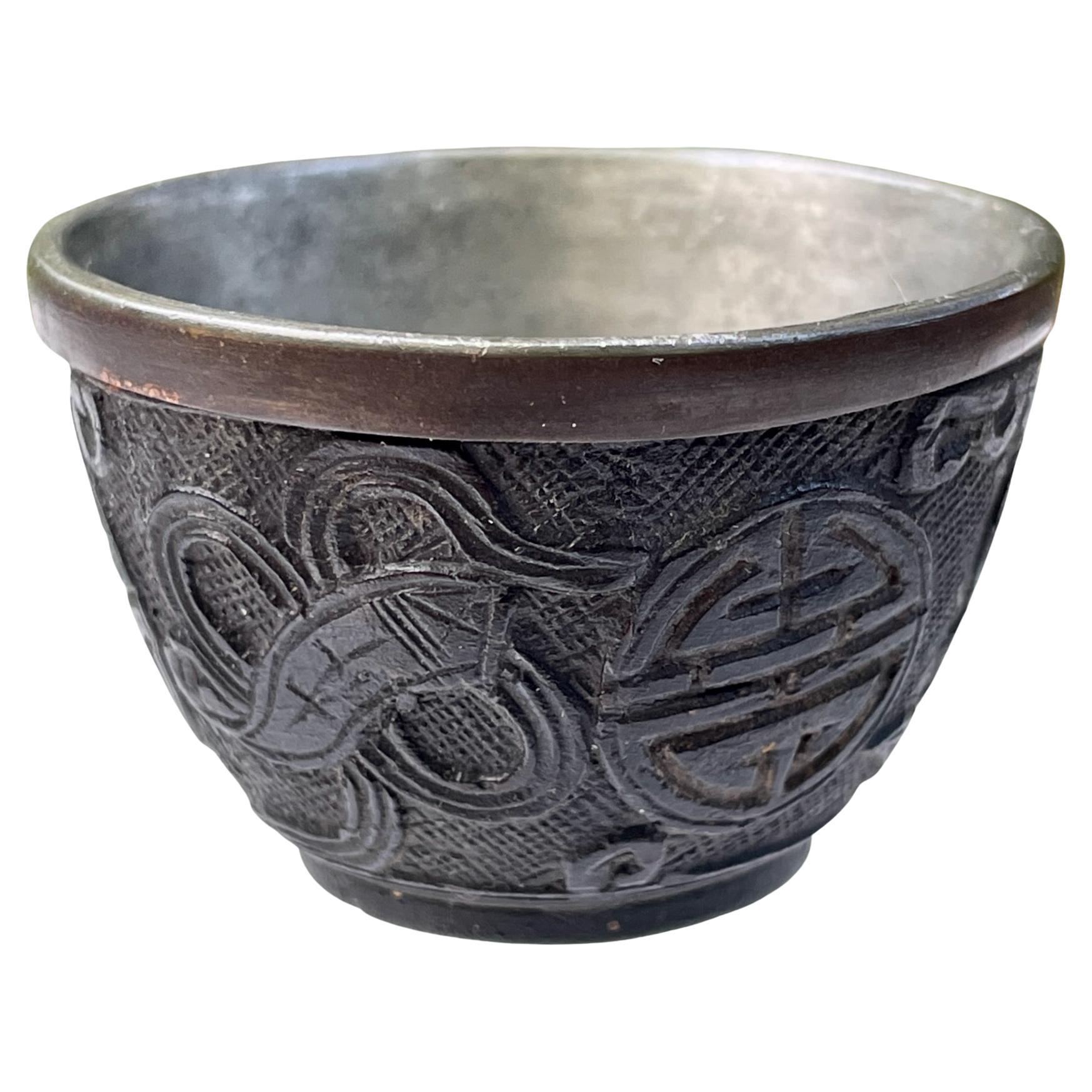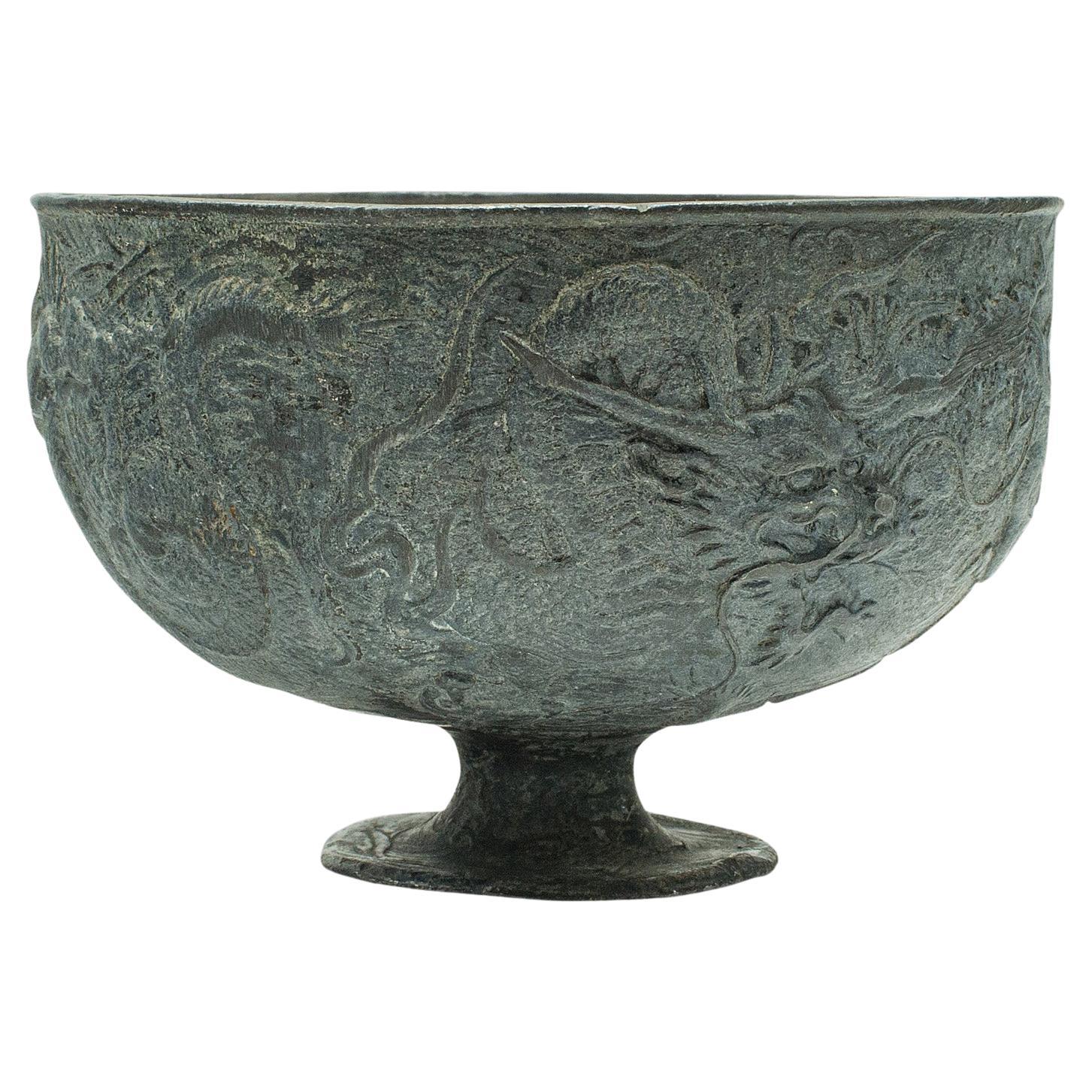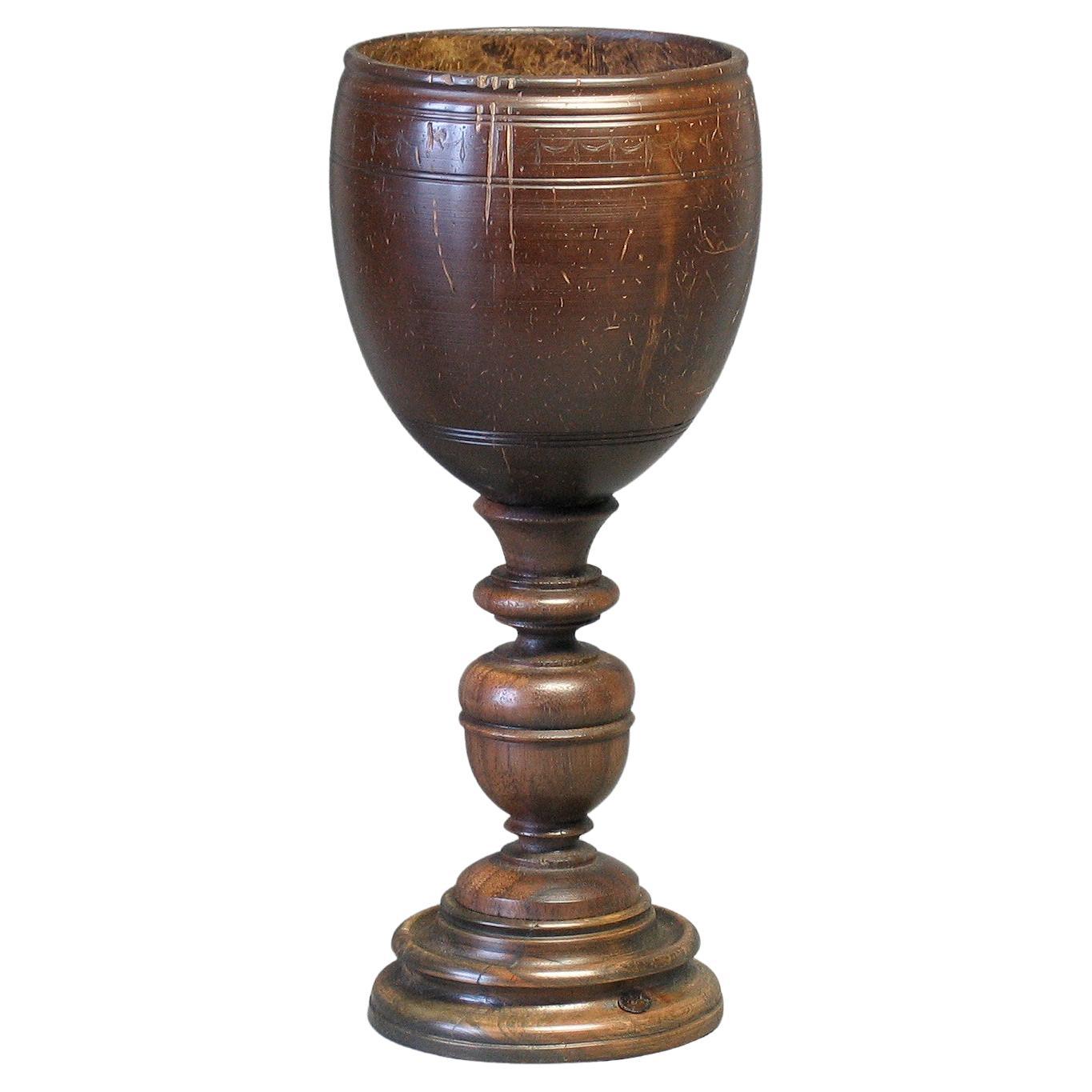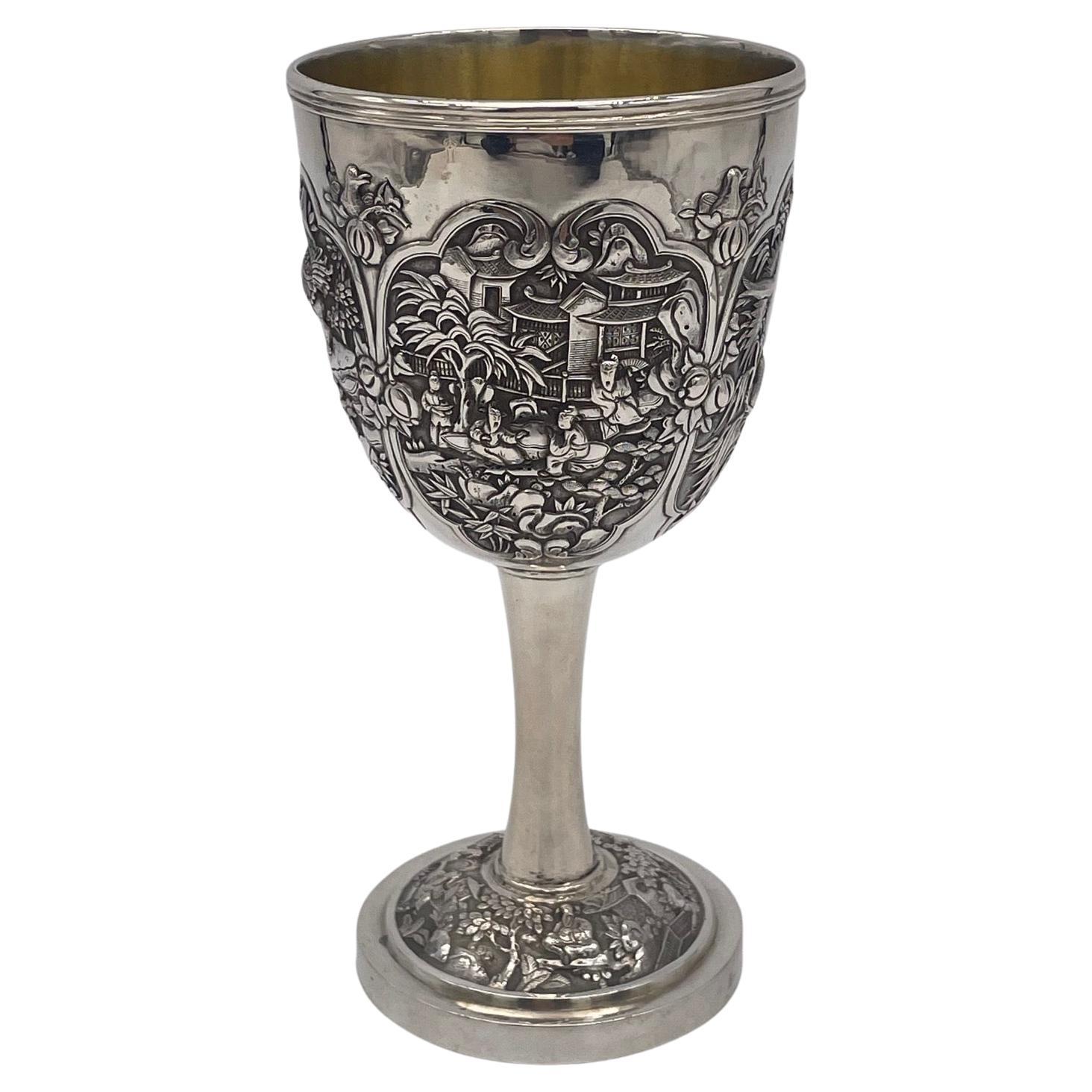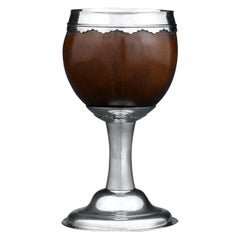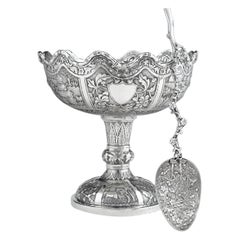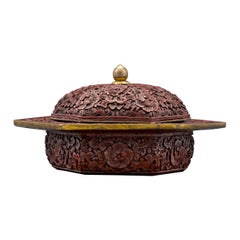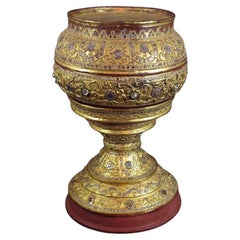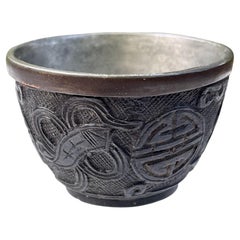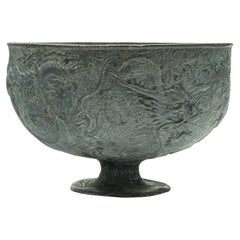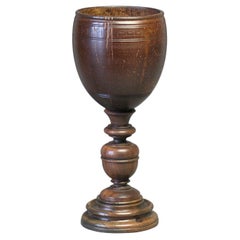Items Similar to Chinese Coconut Cup
Want more images or videos?
Request additional images or videos from the seller
1 of 5
Chinese Coconut Cup
$3,950
£2,997.17
€3,426.99
CA$5,517.08
A$6,134.24
CHF 3,202.96
MX$74,668.65
NOK 40,868.40
SEK 38,291.74
DKK 25,576.29
Shipping
Retrieving quote...The 1stDibs Promise:
Authenticity Guarantee,
Money-Back Guarantee,
24-Hour Cancellation
About the Item
Carved from the shell of a coconut, this enchanting Chinese cup exhibits exceptional artistry. An elegant floral design encircles the entire cup, while the interior is fully lined with silver. In addition to the poison detecting powers attributed to coconuts, the Chinese believed that silver would tarnish when in contact with poison. In fact, many wealthy Chinese used silver lined cups and chopsticks tipped with silver fittings as an assurance against poisoning. To find a silver-lined coconut cup of such wonderful quality, elevated on a silver pedestal, is exceptionally rare.
Features maker’s mark on the underside,
Circa 1800
Measures: 3 1/4” diameter x 5 1/2” high.
- Dimensions:Height: 5.5 in (13.97 cm)Diameter: 3.25 in (8.26 cm)
- Style:Other (In the Style Of)
- Materials and Techniques:
- Place of Origin:
- Period:
- Date of Manufacture:circa 1800
- Condition:
- Seller Location:New Orleans, LA
- Reference Number:Seller: 29-86081stDibs: LU891123856662
About the Seller
5.0
Recognized Seller
These prestigious sellers are industry leaders and represent the highest echelon for item quality and design.
Established in 1912
1stDibs seller since 2010
109 sales on 1stDibs
Typical response time: 4 hours
- ShippingRetrieving quote...Shipping from: New Orleans, LA
- Return Policy
Authenticity Guarantee
In the unlikely event there’s an issue with an item’s authenticity, contact us within 1 year for a full refund. DetailsMoney-Back Guarantee
If your item is not as described, is damaged in transit, or does not arrive, contact us within 7 days for a full refund. Details24-Hour Cancellation
You have a 24-hour grace period in which to reconsider your purchase, with no questions asked.Vetted Professional Sellers
Our world-class sellers must adhere to strict standards for service and quality, maintaining the integrity of our listings.Price-Match Guarantee
If you find that a seller listed the same item for a lower price elsewhere, we’ll match it.Trusted Global Delivery
Our best-in-class carrier network provides specialized shipping options worldwide, including custom delivery.More From This Seller
View AllGeorgian Coconut Cup
Located in New Orleans, LA
This intriguing sterling silver cup features the shell of a coconut mounted into exquisite silver. A sublime example of elegant Georgian design, the cup features delicate scalloped edging as its singular motif. It is extraordinary to find such a beautiful example of this lost art, exhibiting a rare combination of classical beauty and exotic charm.
The use of rare and exotic materials such as the coconut became popular across Europe during the Middle Ages, when it was believed that these unique materials from distant lands possessed mystical powers. It was held that they could detect, and even deter, the effects of poison and as such were employed as drinking vessels, often mounted with ornate embellishments of silver. As more trade routes opened up during the 16th century, materials such as the coconut became more widely available, though still only afforded to the wealthy minority in Europe and England. And, while they eventually lost their appeal for their magical powers, coconuts proved an ideal material for cups and pots and retained their popularity as such. Very similar silver-mounted coconut cups...
Category
Antique 18th Century English Georgian Tableware
Materials
Silver
$5,500
Chinese Export Silver Bowl and Spoon
Located in New Orleans, LA
This delightful and extremely rare spoon and bowl pair exemplifies the remarkable artistry of Chinese export silver. Chinese silver pieces are renowned for their exceptional quality and unique designs, and the majority are entirely hand crafted. Today, many of these elaborate designs are housed in major museum collections, and remain a rarity on the market.
Beginning in the 18th century, silver workshops in China specialized in the manufacture of silver export pieces for Western audiences. Typically bearing motifs that were popular amongst Americans and Europeans such as dragons, bamboo and floral patterns, these charming pieces were all beautifully handcrafted with the utmost skill. Today, important pieces of Chinese export silver such as this one can be found in many of the major museum collections, and are highly valued amongst collectors.
The bowl boasts a fluid, undulating rim exquisitely engraved to depict bamboo, a motif which continues throughout the bowls body. Accompanying the bowl is a matching silver spoon, its handle intricately modeled as a vine with floral buds climbing upwards to its bowl, which seems to bloom with lovely applied buds and flowers.
The spoon features the mark of Wing Fat, a firm active in Hong Kong from 1875-1930 and Sing Fat...
Category
Early 20th Century Chinese Chinese Export Serving Pieces
Materials
Silver
Pre-Columbian Honduran Marble Bowl
Located in New Orleans, LA
This exceptionally rare Ulúa marble bowl displays the lustrous white glow of the stone vessels that are native to the Ulúa river valley region of Honduras. With its alluring fluid flow of relief carvings around the entirety of its form, it exemplifies the remarkable ability of the ancient craftsmen. Ulúa artisans used simple stone tools to create magnificent marble bowls...
Category
Antique 15th Century and Earlier Colombian Other Decorative Bowls
Materials
Marble
Chinese Cinnabar Lacquer Cuspidor
Located in New Orleans, LA
This intriguing Chinese zhadou is intricately carved of fine cinnabar lacquer. A work of exceptional artistry, this covered bowl is adorned with an intricately carved floral motif on all surfaces, including the cover and the wide rim. Also known as a cuspidor or spittoon, this rare container would have been used by members of the imperial family and scholar- officials at the court. Carved during the Kangxi period (1662-1722), this charming piece exhibits the high detail and charm associated with items from that period, making it a true treasure,
Early 18th century (Kangxi dynasty)
Measures: 6 ¼” wide x 3 ¼” high
Cinnabar has been revered for its color all over the world. It has been found in the royal burial chambers of the Mayas, in the rituals of India, and in the ruins of ancient Greece and Rome. In China, cinnabar and gold were the two most important elements in alchemy. Mined since the Neolithic Age, cinnabar is the ore of mercury, and as such, it can be incredibly toxic, especially when mining. In fact, during the Roman Empire, miners at Spain’s Almadén mine in Spain were frequently exposed to mercury fumes, and the subsequent, often fatal, sickness was considered an occupational hazard.
The most popular known use of cinnabar is in Chinese carved lacquer-ware, a technique that is believed to have originated in the Song Dynasty, in which cinnabar is ground to a powder and added to clear lacquer. As with mining, there was inherent danger of mercury poisoning for those who carved the lacquer, as mercury was also released into the air when artisans ground the pigments. Most antique cinnabar...
Category
Antique 18th Century Chinese Other Lacquer
Materials
Lacquer
Daum Nancy Glass Vase
Located in New Orleans, LA
This Daum Nancy acid-etched glass vase represents an exceptionally rare and particularly graceful model from the renowned French firm. The glassmakers of Daum Nancy have long been ce...
Category
20th Century French Vases
Materials
Glass
$2,985
Bohemian Crystal Goblet
Located in New Orleans, LA
A striking example of Czech artistry, this Bohemian glass goblet exhibits carefully carved scenes of stags within wooded landscapes that evoke th...
Category
Antique 19th Century Czech Bohemian Glass
Materials
Crystal
$11,500
You May Also Like
Antique Burmese Offering Vessel from Burma
Located in DEVENTER, NL
Material: lacquerware
Measures: 42 cm high
27 cm diameter
Weight: 2.1 kgs
3 parts
Mandalay style
Originating from Burma
19th century
Cover is made of lacquered bamboo
Base is made from wood
Offering vessel...
Category
Antique 19th Century Burmese Sculptures and Carvings
Materials
Lacquer
Rare Antique Chinese Qing Carved Coconut Bowl Tea Cup
Located in Hyattsville, MD
Chinese coconut carved shell pewter tea cup, likely from the Qing Dynasty. These cups were considered rare and valuable, with the Chinese believing tha...
Category
Antique 19th Century Chinese Chinese Export Tableware
Materials
Coconut
Antique Libation Cup, Chinese, Lead Alloy, Decorative Bowl, Victorian, C.1880
Located in Hele, Devon, GB
This is an antique libation cup. A Chinese, leaded alloy decorative bowl, dating to the late Victorian period, circa 1880.
Dragon decoration adds a highly appealing finish to this...
Category
Antique Late 19th Century Chinese Decorative Bowls
Materials
Other
Finely Proportioned Coconut Goblet in 17th Century Taste
Located in Ottawa, Ontario
A finely proportioned coconut goblet in 17th century taste
19th century or earlier.
Turned and polished coconut shell,
swag and drop engraved top f...
Category
Antique 19th Century French French Provincial Serving Pieces
Materials
Coconut
Chinese Export Silver Goblet
Located in London, GB
A Chinese Export Silver Goblet of rare and unusual form. The bowl has four panels, two decorated with figural scenes; a third with mythical beasts; and the fourth, which also has a v...
Category
Antique 1860s Chinese Chinese Export Metalwork
Materials
Silver
$10,283
Early 19th Century Carved Coconut Bowl on Stand
Located in Haddonfield, NJ
A charming small antique hand craved coconut bowl, England Circa 1820’s. Displays beautifully on a coffee table or side table standing alone or as part of a collection.
Category
Antique Early 19th Century European Campaign Decorative Bowls
Materials
Wood, Coconut
More Ways To Browse
Measuring Cup
Measuring Cups
Chinese Cups
Antique Measuring Cups
Chinese Silver Cup
Antique Chinese Cup
19th Century Shell Sculpture
19th Century Chinese Pedestal
Shell Cup
Antique Coconut
Antique Poison
Carved Coconut
Antique Carved Coconuts
Antique Coconut Cups
Coconut Cup
Antique Carved Coconut Shells
Antique Chinese Chopsticks
Chinese Coconut Cup
